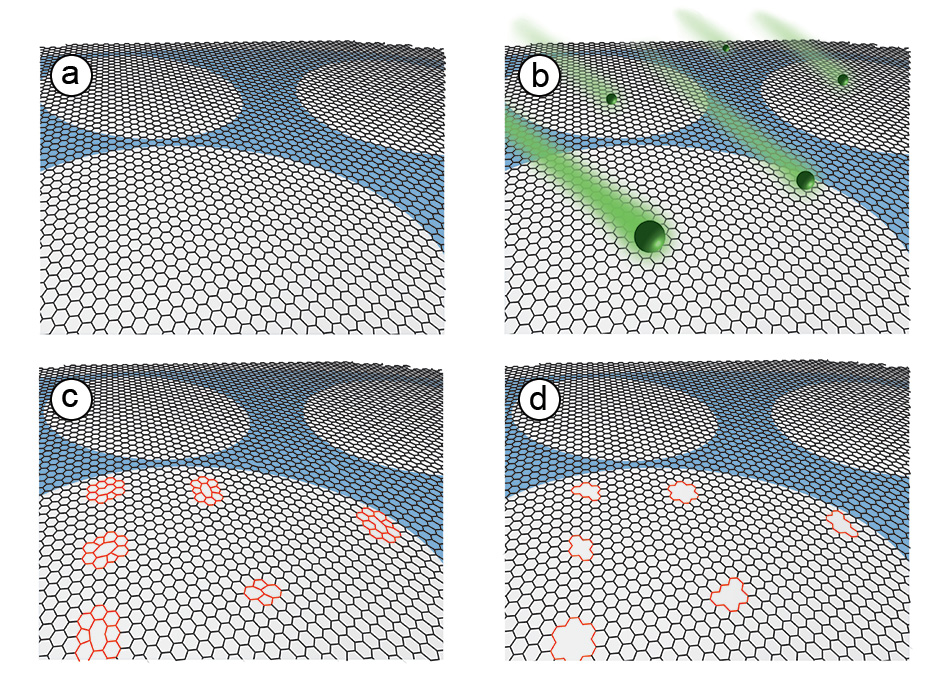New Graphene Application: High Efficiency Water Filters
Scientists from the Massachusetts Institute of Technology have developed a technology that allows making holes of a certain diameter in graphene sheets. The resulting “sieve,” depending on the size of the holes, can filter particles of various sizes, from ions to large organic molecules. The filter membranes of traditional materials have to be made quite thick so that they are sufficiently strong (for reverse osmosis plants desalinating sea water, the working pressure can reach 70 atmospheres). Graphene is ten times stronger than plastic, from which ordinary membranes are made, which means that the membrane can be much thinner and pass water much faster.

The holes in the graphene sheet are made in two stages. First, graphene is bombarded with gallium ions with energy sufficient to disrupt its structure at the points of impact. Then the membrane is immersed in an oxidizing agent, which destroys graphene primarily in places of defects — holes of approximately the same size appear in the sheet. The longer the graphene is etched, the larger the diameter of the holes.
On one square centimeter of graphene accounts for about five trillion such microscopic pores. With a diameter of the order of one nanometer, the distance between the pores is four nanometers. Experiments on the creation of pores in graphene using bombardment with various particles have been carried out before, but so far there has been no way to precisely control and vary their size over a wide range.
')
It is too early to talk about the use of graphene filters on an industrial scale, since there is no technology for mass-priced production of large sheets of graphene, however, new membranes can now be used in chemical and biological laboratories, in small-scale facilities. Computer simulation shows that the permeability of graphene filters can be 50 times greater than that of traditional ones.

The holes in the graphene sheet are made in two stages. First, graphene is bombarded with gallium ions with energy sufficient to disrupt its structure at the points of impact. Then the membrane is immersed in an oxidizing agent, which destroys graphene primarily in places of defects — holes of approximately the same size appear in the sheet. The longer the graphene is etched, the larger the diameter of the holes.
On one square centimeter of graphene accounts for about five trillion such microscopic pores. With a diameter of the order of one nanometer, the distance between the pores is four nanometers. Experiments on the creation of pores in graphene using bombardment with various particles have been carried out before, but so far there has been no way to precisely control and vary their size over a wide range.
')
It is too early to talk about the use of graphene filters on an industrial scale, since there is no technology for mass-priced production of large sheets of graphene, however, new membranes can now be used in chemical and biological laboratories, in small-scale facilities. Computer simulation shows that the permeability of graphene filters can be 50 times greater than that of traditional ones.
Source: https://habr.com/ru/post/214001/
All Articles